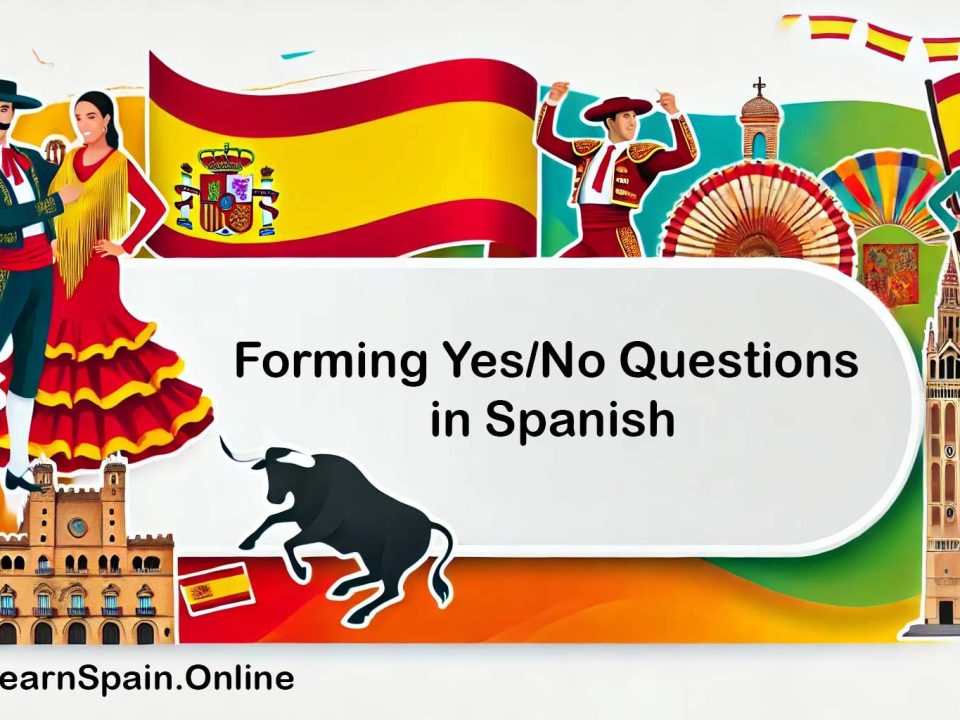
Telling Time in Spanish: A Comprehensive Guide
July 17, 2024
The Verb Gustar and Similar Verbs in Spanish: A Comprehensive Guide
July 17, 2024Basic Prepositions in Spanish: A Comprehensive Guide
Prepositions are essential components of any language, acting as connectors that link nouns, pronouns, and phrases to other words in a sentence. In Spanish, mastering the basic prepositions is crucial for clear and effective communication. This comprehensive guide will focus on five fundamental prepositions: “a,” “de,” “en,” “por,” and “para.” We will cover their meanings, uses, and provide numerous examples to illustrate their correct usage.
Preposition “a”
The preposition “a” in Spanish is equivalent to “to,” “at,” or “on” in English. It is used to indicate direction, time, location, and the indirect object of a verb.
Uses of “a”
- Direction or Destination:
- Voy a la escuela. (I am going to school.)
- Envía la carta a María. (Send the letter to Maria.)
- Time:
- La clase empieza a las ocho. (The class starts at eight.)
- Nos vemos a las tres. (We will meet at three.)
- Location:
- Está a la derecha. (It is on the right.)
- El perro está a la puerta. (The dog is at the door.)
- Indirect Object:
- Le di el libro a Juan. (I gave the book to Juan.)
- Ella contó la historia a los niños. (She told the story to the children.)
Preposition “de”
The preposition “de” in Spanish translates to “of,” “from,” or “about” in English. It is used to indicate possession, origin, material, and cause.
Uses of “de”
- Possession:
- El libro de Ana. (Ana’s book.)
- La casa de mi amigo. (My friend’s house.)
- Origin:
- Soy de México. (I am from Mexico.)
- Viene de España. (He/She comes from Spain.)
- Material:
- La mesa de madera. (The wooden table.)
- Una taza de plástico. (A plastic cup.)
- Cause or Reason:
- Murió de hambre. (He/She died of hunger.)
- Lloro de alegría. (I cry out of joy.)
Preposition “en”
The preposition “en” in Spanish means “in,” “on,” or “at” in English. It is used to indicate location, time, and mode of transportation.
Uses of “en”
- Location:
- Estoy en casa. (I am at home.)
- El libro está en la mesa. (The book is on the table.)
- Time:
- Nos vemos en una hora. (We will see each other in an hour.)
- La reunión es en marzo. (The meeting is in March.)
- Mode of Transportation:
- Voy en coche. (I go by car.)
- Llegó en avión. (He/She arrived by plane.)
Preposition “por”
The preposition “por” in Spanish translates to “by,” “through,” “for,” or “because of” in English. It is used to indicate cause, means, time, and exchange.
Uses of “por”
- Cause or Reason:
- Lo hizo por amor. (He/She did it out of love.)
- Estoy aquí por ti. (I am here because of you.)
- Means or Mode:
- Viajé por tren. (I traveled by train.)
- Envié el paquete por correo. (I sent the package by mail.)
- Time (Duration):
- Viví en España por dos años. (I lived in Spain for two years.)
- Estaré aquí por una semana. (I will be here for a week.)
- Exchange or Substitution:
- Te cambio mi libro por el tuyo. (I will exchange my book for yours.)
- Pagué veinte dólares por la camisa. (I paid twenty dollars for the shirt.)
Preposition “para”
The preposition “para” in Spanish is equivalent to “for,” “to,” “in order to,” or “by” in English. It is used to indicate purpose, recipient, destination, and deadlines.
Uses of “para”
- Purpose or Goal:
- Estudio para aprender. (I study in order to learn.)
- Trabaja para ganar dinero. (He/She works to earn money.)
- Recipient:
- Este regalo es para ti. (This gift is for you.)
- Compré flores para mi madre. (I bought flowers for my mother.)
- Destination:
- Salimos para Madrid. (We are leaving for Madrid.)
- Voy para la oficina. (I am going to the office.)
- Deadlines:
- La tarea es para mañana. (The homework is for tomorrow.)
- El proyecto es para el lunes. (The project is due by Monday.)
Examples in Context
- Voy a la playa para relajarme. (I go to the beach to relax.)
- El coche de mi hermano es nuevo. (My brother’s car is new.)
- Estamos en el parque. (We are in the park.)
- Trabajo por dinero. (I work for money.)
- Esta carta es para mi amiga. (This letter is for my friend.)
Common Mistakes and How to Avoid Them
- Confusing “por” and “para”: These prepositions can be tricky. Remember that “por” often refers to cause or means, while “para” indicates purpose or destination.
- Incorrect: Trabajo para dinero.
- Correct: Trabajo por dinero.
- Misusing “a” and “en” for Locations: Use “a” for direction and “en” for location.
- Incorrect: Voy en la escuela.
- Correct: Voy a la escuela.
- Incorrect Use of “de” for Origin: Ensure “de” is used correctly to indicate origin.
- Incorrect: Soy en México.
- Correct: Soy de México.
Practice Exercises
To reinforce your understanding of basic prepositions in Spanish, try these exercises:
- Translate the Prepositions: Write the Spanish prepositions for the following:
- to
- of
- in
- for (cause)
- by (purpose)
- Complete the Sentences: Fill in the blanks with the correct preposition:
- Voy __ la tienda. (I go to the store.)
- El regalo es __ mi hermana. (The gift is for my sister.)
- Estamos __ el jardín. (We are in the garden.)
- Lo hice __ amor. (I did it out of love.)
- Vengo __ la biblioteca. (I come from the library.)
- Match the Prepositions: Match the Spanish prepositions with their English equivalents:
- a
- de
- en
- por
- para
- for (purpose)
- in
- to
- by (means)
- of
- Translate the Sentences: Translate the following sentences into Spanish:
- I study to learn.
- She comes from the park.
- This book is for my friend.
- We traveled by bus.
- The meeting is at three o’clock.
Conclusion
Mastering basic prepositions in Spanish is essential for effective communication and understanding the language. By learning how to use “a,” “de,” “en,” “por,” and “para” correctly, you can create more precise and meaningful sentences. Regular practice and real-life application will help solidify your understanding and make you more confident in your Spanish-speaking abilities.
Start incorporating these prepositions into your daily Spanish practice, and you’ll soon find yourself speaking with greater fluency and confidence. ¡Buena suerte! (Good luck!)


